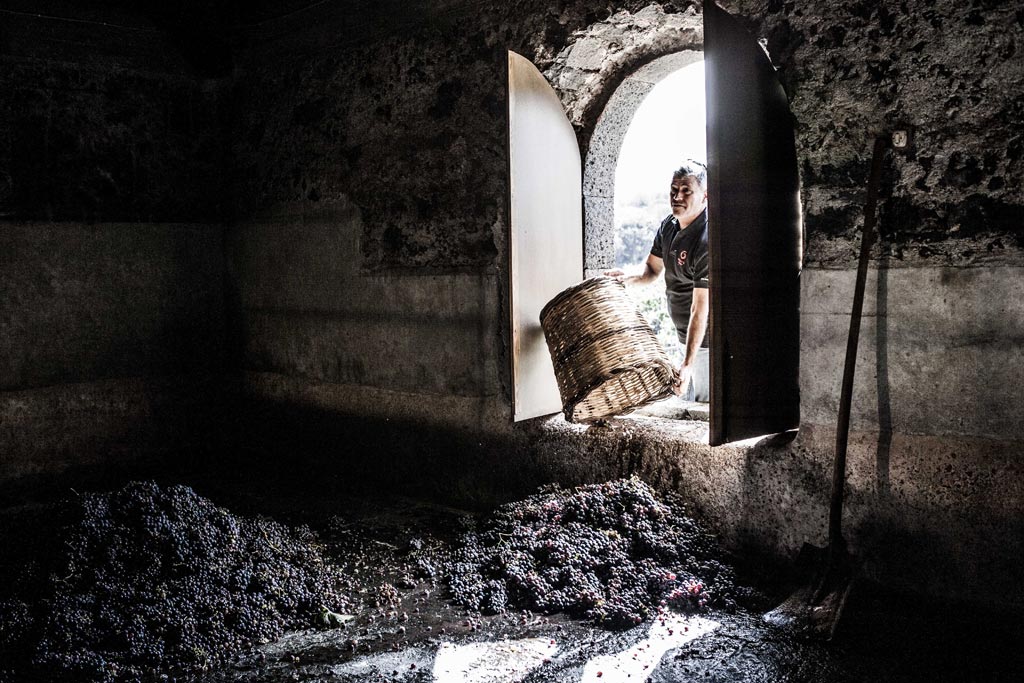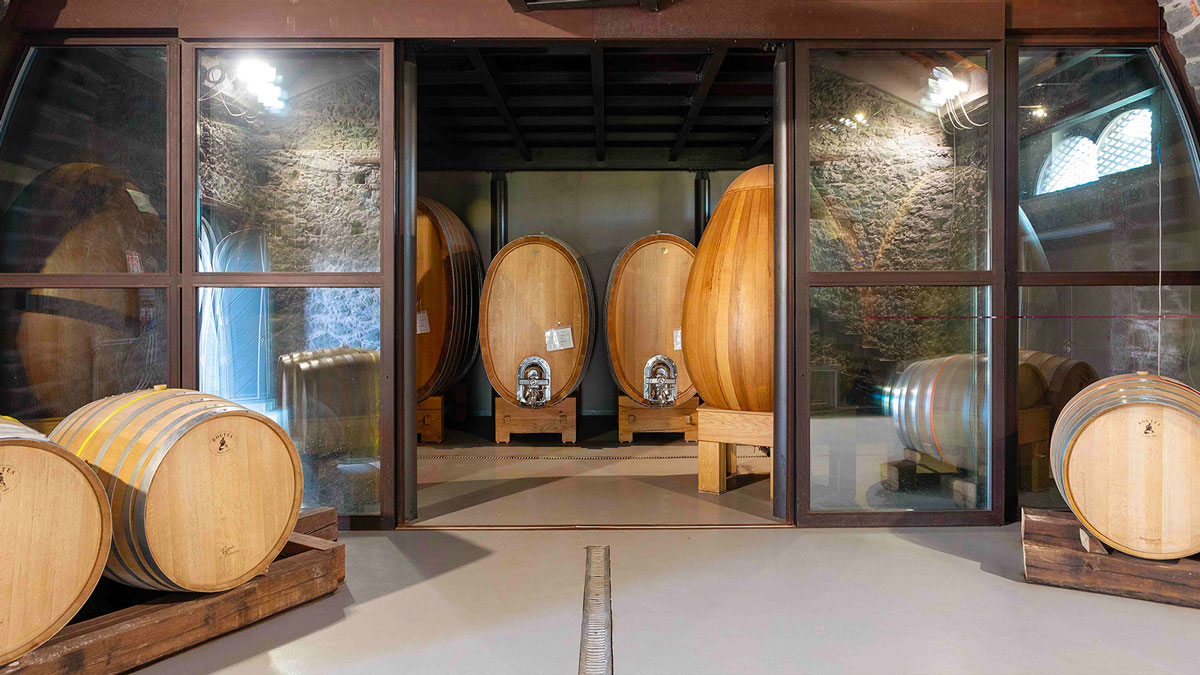
Palmento
The restoration of the ancient Palmento made from lava stone: a remarkable proof of the key role played by viticulture within Etna production.
The Ancient Palmento
Traditional structure of the Etna territory
In Sicily, the palmento is an ancient winemaking room located next to the vineyards. This traditional structure of the Etna territory was built in lava stone and was used until the mid-twentieth century. The harvested grapes were put in the palmento and, through a multi-level system built according to the morphology of the soil, were pressed with the feet (pista), filling the barrels located underneath with must. The origin of this term is wrapped in mystery, but it may refer to the fact that the tub where the grapes were crushed is elevated from the floor (parmentu). The wine must would flow through a system of channels made in stone (cannedda) towards the fermentation vats (ricivitùri) and then to the aging tanks, which were located in a room beneath called “ispensa”, a cellar containing 100-200 hl chestnut wood barrels.


Conservative restoration
A gem of rural engineering and a key component for production, the Palmento acquired by the Costanzo family underwent a meticulous conservative restoration process. To respect the multi-level structure, the technological integrations have been adapted in order to maintain the traditional production process without altering the space at hand. Today, an area dedicated to grape pressing and fermentation, which is carried out in truncated conical oak vats, can be found where the pista once was performed. Underneath, stainless steel containers and the unique “orange”-shaped tank: the latter is a vertical fermentation vat that is divided into different sections and can simultaneously refine different wines. Finally, on the ground floor is the barrel room containing the precious Ovum French oak barrels, which make use of convective motion to facilitate natural bâtonnage.
The process employs the force of gravity and does not use pumps for pumping over. This preserves fruit integrity and maintains the natural expressiveness of the grapes.





